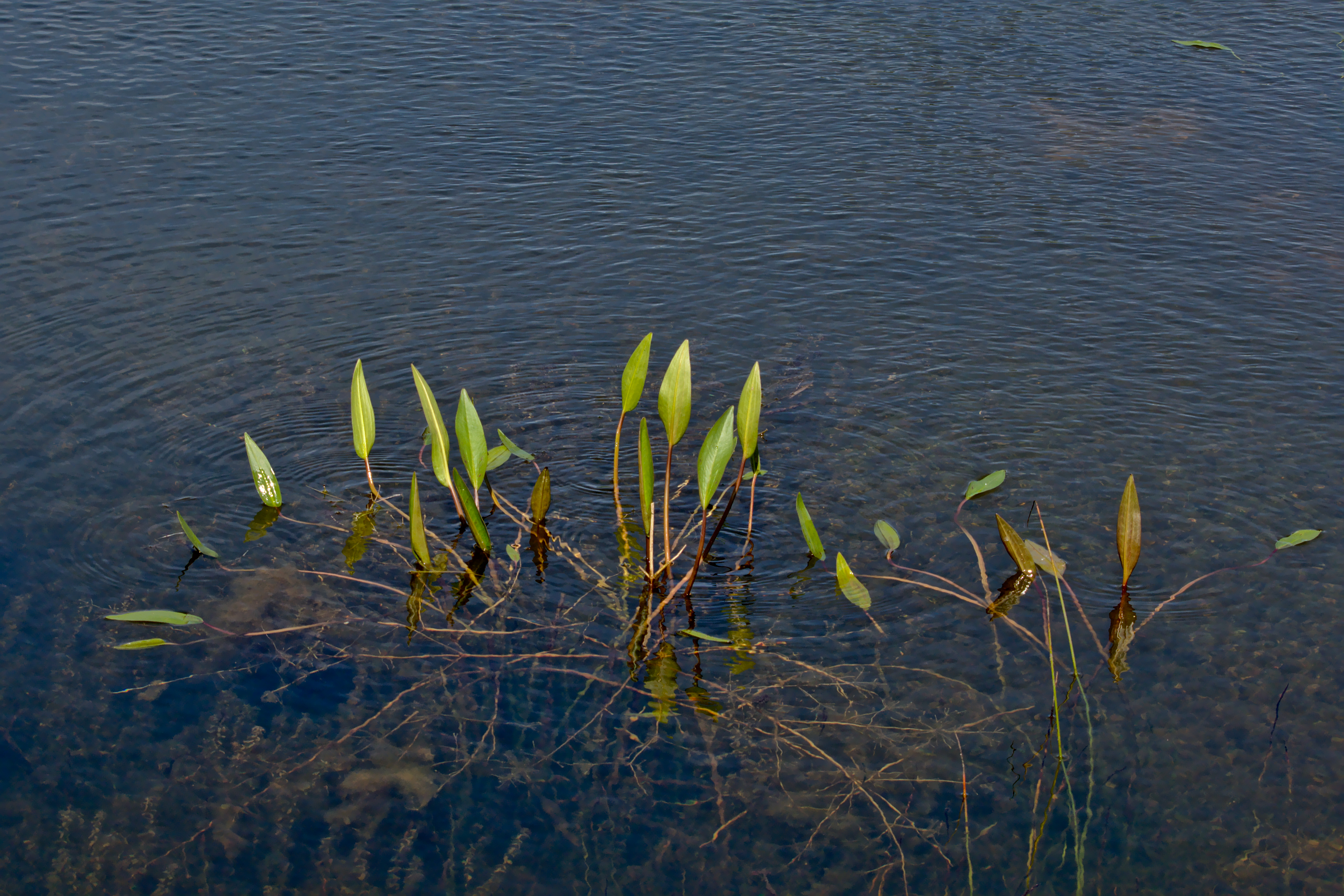American water plantain
(Alisma subcordatum)

Description
Alisma subcordatum, the American water plantain, is a perennial aquatic plant in the water-plantain family (Alismataceae). This plant grows to about 3 feet (1 meter) in height with lance to oval shaped leaves rising from bulbous corms with fibrous roots. Any leaves that form underwater are weak and quick to rot; they rarely remain on adult plants. A branched inflorescence with white to pink 3-petaled flowers blooms from June to September. The seeds are eaten by waterfowl and upland birds. Native Americans dried and ate the submerged rootlike structures. The species name subcordatum means "almost heart-shaped". American water plantain is native to most of eastern and central United States and Canada from Texas to Georgia, north to Manitoba and New Brunswick, though it has not been reported from Florida. It grows in the mud of still to slow moving water, seeps, and wetlands. Alisma is a genus of flowering plants in the family Alismataceae, members of which are commonly known as water-plantains. The genus consists of aquatic plants with leaves either floating or submerged, found in a variety of still water habitats around the world (nearly worldwide). The flowers are hermaphrodite, and are arranged in panicles, racemes, or umbels. Alisma flowers have six stamens, numerous free carpels in a single whorl, each with 1 ovule, and subventral styles. The fruit is an achene with a short beak. The nineteenth century British art and social critic John Ruskin believed that the particular curve of the leaf-ribs of Alisma represented a model of 'divine proportion' and helped shape his theory of Gothic architecture. Copóg Phádraig ("Patrick's leaf") is the Irish name for the water-plantain. It is reputed to ward off fairies. Water plantains are perennial plants. These herbs are usually emergent plants 0.1-1 m (4-40 in) high. They have broad leaves that can be either tapered or rounded at the base. When submerged, the plant produces ribbon-like leaves. Inflorescences are highly branched. They produce whorls of perfect flowers either white or pinkish. The fruits are flat-sided nutlets 2.5-3 mm (0.098-0.118 in) in length. These herbs usually flower in late May to early September, but this can vary with conditions.
Taxonomic tree:







